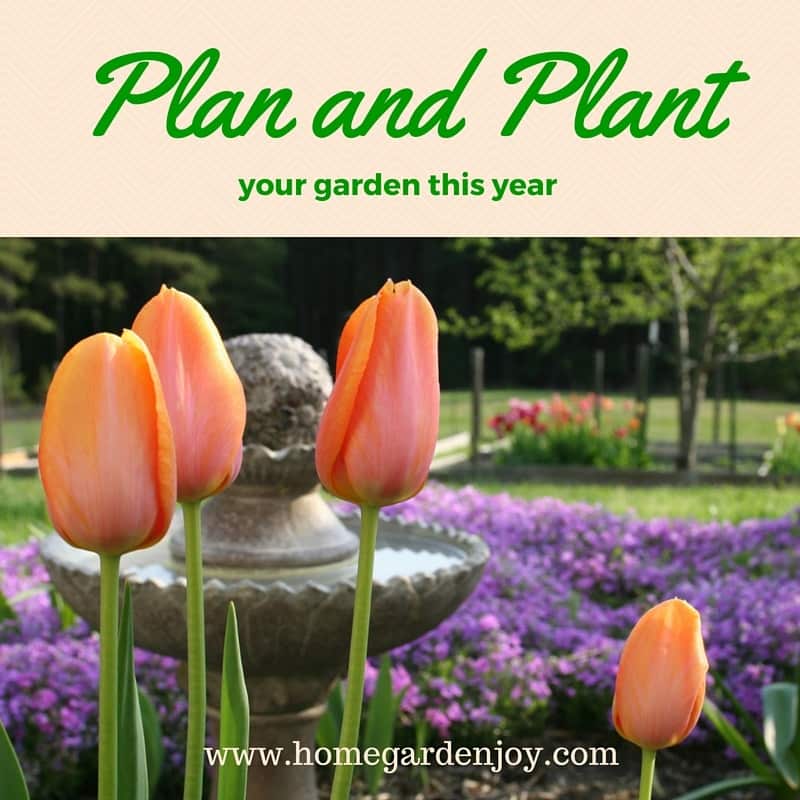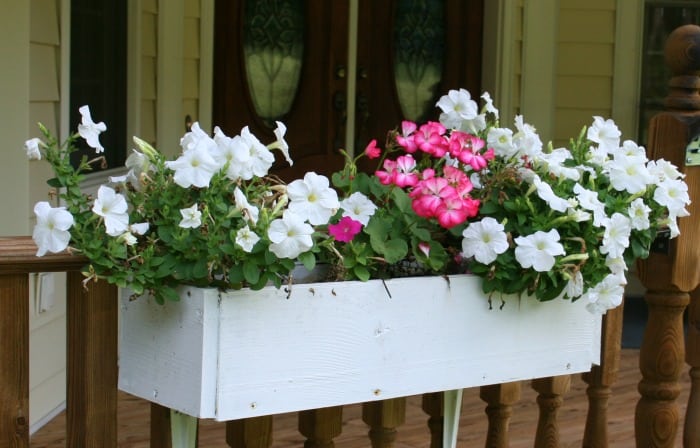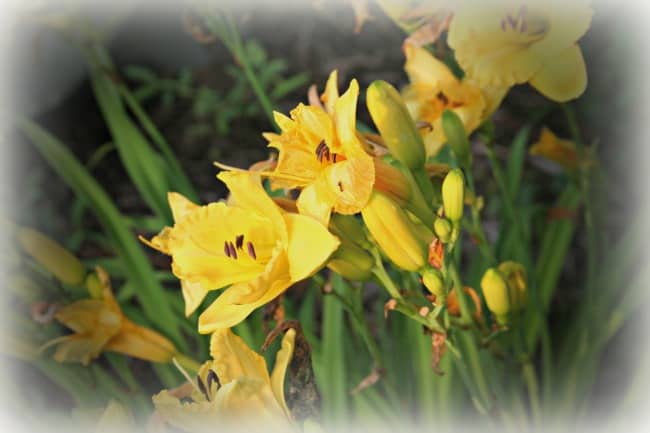Garden planning begins many months before the first flowers bloom. Now is the time to dream about the possibilities and plan your garden accordingly.
Five Garden Planning Tips
When spring arrives, it’s easy to get carried away at your local garden center and fill your cart with pansies and other early blooming flowers.If you’ve planned your garden, however, you’ll know exactly what to buy, when to buy it, and how many you will need. You won’t go crazy planting one flower at the start of the season and then have nothing bloom later on.
Winter is the best time for garden planning. Why? I don’t know about you, but as I sit in my office staring out at the patches of snow on the lawn, and think about the many dreary weeks until I can get back into the garden, I’m filled with a sense of longing.
I want to plunge my hands into the earth again and smell the richness of soil. I want to laugh at the wriggling worms and delight at finding new seedlings peering through the earth in unlikely places. I want buds on trees, butterflies flitting about the garden, and my beloved hummingbirds again.
My mind turns to the garden. I consider the bare trellis in the rose garden. What shall I plant? Clematis, hummingbird vine, jasmine, passion flower? It’s time to dream, to plan my garden.
Over the years, I’ve developed a system for garden planning that I think works well. It might work well for you, too. If you’re new at garden planning, my book Get Your Hands Dirty, A Beginner’s Guide to Gardening (Amazon Kindle) can help. I’ll also link to a series of articles on this website which can help you, too.
Five Garden Planning Tips for Your Best Garden Ever
- Make notes on what you have: The first step is a sort of inventory of your existing garden. Not only should you note which seeds you still have in your basement or garage from last year, but you should take a pad of paper out to the garden and sketch what you have in the garden now. It doesn’t have to be picture perfect. You can draw circles for shrubs, triangles for trees or whatever works for you. Just make a little plan so that you know what you have to work with.
- For vegetable gardens, make a list of what you like to eat: I always tell people to grow only what they themselves like to eat. Make a list of the vegetables both you and your family enjoy. It doesn’t matter if green beans are the easiest thing to grow. If your family hates them, don’t plant them.
- Narrow down your list: It’s easy to get carried away and want to plant dozens of things. I’ve found it best to concentrate on what grows well in my garden and what I can easily can, freeze or dry for later use. If I have too much of one vegetable at a time, I get sick of it and we can’t eat it fast enough. Sure you can (and should!) give away extra produce to your local food bank. Planting a row for the hungry is a worthwhile endeavor. But too much waste makes for tired, grumpy gardeners. Instead, focus on what you love, what can grow in your garden, and what makes economic sense for you. If it’s cheaper to purchase a few cucumbers at the farmer’s market than to struggle with growing them, buy them.
- Decide which flowers you can grow from seed and which are easier to buy as plants: This is tricky for new gardeners, so you may need help with this from your local garden center or cooperative extension office if you aren’t sure. Some flower seeds tend to grow easily in many climates. Zinnias and marigolds are two of the easiest seeds I know to grow. I stock up on packages of them whenever I can find them in the stores, and I save marigold seeds on my own so I always have plenty to plant. I never purchase started plants because the seeds take easily in the ground and tend to be trouble-free. Other plants can be difficult to start from seed. Lavender is notoriously finicky, and other perennials just need a long time to get growing. For some gardeners who only need a few plants to fill in spaces with color here and there, it makes sense to buy just a few plants instead of buying seeds.
- Order seeds online now: I recommend ordering all of your garden seeds now, in the late winter or early spring, even if you don’t intend to plant them until the summer (fall vegetables, for instance.) Many companies sell out of certain varieties, and you may be disappointed if you cant get your favorites right away. Save the unopened packages in a cool, dry place until you’re ready to plant.
[Tweet “Order garden seeds now for the entire year so you never run out. “]
Other Garden Planning Tips
Take lots of pictures of your garden throughout the spring, summer and fall. I try to take a picture from the same spot once a month so that I can see the progress of my garden. It also helps to remind me of where I planted things like spring bulbs. It’s easy to forget where you’ve planted them when you’re digging in August to add mums.
Don’t forget to plan on hardscapes. Hardscapes are things like pathways, fences, gates and trellises. They can be a focal point or a necessary object such as a pathway.
[Tweet “A garden is a living, evolving landscape. Garden planning tips. #gardening.”]
A garden is a living, evolving landscape. It’s never the same two days in a row, and it’s never the same two years in a row. And no matter how much you plan before you plant, something changes. But by planning your garden now, you’ll save time and money later by purchasing just what you need and knowing where you have room to grow it.








